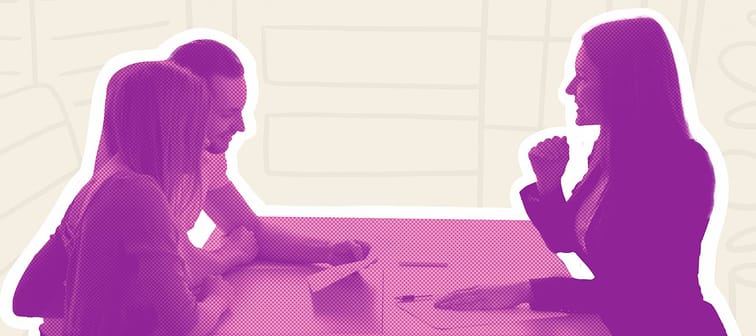Best personal loan rates
When comparing your options for a personal loan, you’ll want to consider the amount you need to borrow and the interest rate you're offered.
Personal loan rates can start as low as 5.40% APR but go as high as 36%.
The actual rate you receive depends on several factors, including the amount you want to borrow, your credit score, your income and more.
Average personal loan rate
The average interest rate on a 24-month personal loan in the U.S. was 10.16% in August 2022, according to the most recent data from the Federal Reserve, which is up from 8.73% back in May 2022. In comparison, the same survey found the average interest rate on all credit card accounts was 16.27%.
So, if you're looking for a way to manage your debt, a lower interest rate on a personal loan is a perfect way to get a break from high credit card interest rates and merge multiple monthly bills into a single, fixed payment.
Kiss Your Credit Card Debt Goodbye
Having a single loan to pay off makes it easier to manage your payments, and you can often get a better interest rate than what you might be paying on credit cards and car loans.
Fiona is an online marketplace offering personalized loan options based on your unique financial situation.
When you consolidate your debt with a personal loan, you can roll your payments into one monthly installment. Find a lower interest rate and pay down your debt faster today.
Get StartedHow personal loans work?
A personal loan is a basic form of borrowing that can help you achieve certain goals, like renovating your house, funding a postsecondary education or getting yourself out of debt.
The process is fairly straightforward. You borrow a lump sum of money from a bank or online lender, then pay it back in fixed installments — which include interest.
With personal loans, everything is very clear: Your loan will have a beginning and an end, as well as a fixed, simple interest rate.
Most lenders will give you a two- to five-year term to repay your loan, and once you’ve done that, the account will close.
A personal loan is different from a personal line of credit, which is a revolving type of loan. With revolving loans you’re given a maximum amount of money you can borrow, and a draw period — an amount of time for withdrawing whatever you’d like. You’ll pay interest only on what you borrow.
Credit cards are another example of revolving loans.
But if you’ve got a large or one-time expense, a personal loan is probably a better option than a personal line of credit. Plus, if you have bad credit you’ll generally find the loans are easier to qualify for than personal lines of credit or low-interest credit cards.
More: Best personal loans
What is an 'unsecured' personal loan?
Most personal loans are unsecured debt. That means you don’t have to offer your lender an asset as collateral, which you might have to forfeit if you ever stop making your payments.
Examples of secured loans include your mortgage, an auto loan or a home equity loan.
One benefit of a secured loan is that the bank, credit union or financial institution you’re borrowing from knows it will get its investment back no matter what. Because of that, it can afford to offer you a lower interest rate and better terms.
The terms of an unsecured personal loan will range from lender to lender, and partly depend on your financial history.
Most loans, including personal loans, have origination fees that lenders charge to process the loan. Typically, the fees range from 1% to 8% of your total loan amount.
How much you’ll be charged will likely be influenced by your credit score. You’ll either have to pay the fee upfront, or have it rolled into the overall loan amount.
Personal loans typically include prepayment penalties, meaning the lender will charge you a fee if you decide to pay off your debt early. Lenders do that because when you repay a loan early, they miss out on some interest money and stand to profit less.
Meet Your Retirement Goals Effortlessly
The road to retirement may seem long, but with WiserAdvisor, you can find a trusted partner to guide you every step of the way
WiserAdvisor matches you with vetted financial advisors that offer personalized advice to help you to make the right choices, invest wisely, and secure the retirement you've always dreamed of. Start planning early, and get your retirement mapped out today.
Get StartedBenefits of personal loans
The best thing about personal loans is you can use them for pretty much anything. And unlike with credit cards (another type of unsecured loan), you don’t face compounding interest charges. In other words, you're not charged interest on your interest.
When you take out a personal loan, there are no surprises: You’ll generally borrow a fixed amount at a fixed interest rate. And you’ll have a set deadline for repaying the money.
The way to ensure you come out ahead is by borrowing only as much as you need.
Personal loans are versatile and can be lifesavers when emergency expenses pop up. They also can be excellent for consolidating debt at a lower interest rate if you’re struggling to keep up with your minimum payments on credit cards and other loans.
But you have to be careful. If you borrow more than you can reasonably manage to repay within the timeline, you may find yourself dealing with a collections agency — and taking a serious hit to your credit score.
More: When you should get a personal loan (and when you shouldn't)
Tips to get the best personal loan rate
Unsecured loans, like most personal loans, pose a higher risk for lenders. But you can mitigate your risk profile and secure a better rate on a personal loan through a few different strategies:
Work on your credit score. A high credit score tells potential lenders you’re a responsible borrower who uses credit wisely and has a long history of repaying debts. If you don’t already know your credit score, Credit Sesame can give you access to your score for free. Armed with the information, you can set to work improving your credit score, if necessary.
Use credit cards regularly. One of the five factors that contribute toward your credit score is credit utilization. Many people don’t realize that not using their credit cards can lower their credit score. So keep swiping to keep your score steady.
Manage your debts. If you currently have other unsecured or secured loans, make sure you’re making your loan payments in full and on time. Before granting you a personal loan, a lender will look at your debt-to-income ratio to see whether you have sufficient income to support another debt payment.
Low-interest rate personal loans
If you’ve put time and effort into spiffing up your financial profile so you can qualify for a personal loan, you should have no problem landing one with a low interest rate.
But where do you look for low-interest loans?
How to find low-interest personal loans
Financial experts recommend you shop around for a few different loan offers before you commit to one.
If that sounds like a lot of trouble, services including Credible take the work out of looking for a personal loan.
Credible is an online marketplace that provides borrowers with competitive, personalized loan offers from multiple, vetted lenders in real time.
How much can I borrow with a personal loan?
The amount you can borrow depends on a few factors, including your history with loans and the specific lending guidelines and restrictions of certain institutions.
Typically, personal loans range between $600 and $100,000, but most fall on the lower end of that range. The average new personal loan size is $6,382, according to Lending Tree.
Don’t be discouraged if you're not approved on your first application. You may be denied a loan from one credit union, but be approved for the same amount (or more) by a regional bank.
That’s why you need to shop around for loan offers.
More: Compare personal loan rates from Credible
Are there alternatives to a personal loan?
If an unsecured personal loan isn’t the right option for you, you have a few borrowing alternatives.
For homeowners, loans secured by the equity in your home can be a great option.
As mentioned earlier, the major benefit to a secured loan is you can generally lock down a lower interest rate. But the flipside is you have to put up your home as collateral.
When your house is on the line, it’s crucial that you keep up with your payment schedule — or you could risk losing your home.
Home equity loan
A home equity loan, also known as a "second mortgage," is one type of loan secured against the equity you’ve built up in your home. Your equity is the difference between your home’s fair market value and the outstanding balance owed on your mortgage.
As you pay down your mortgage — or your home increases in value over what you originally paid for it — your home equity increases.
Using your equity as collateral, you can borrow a sum of money that you’ll receive as a lump sum.
You’ll be expected to pay back your loan over time at a fixed interest rate. Home equity loans are structured as amortizing loans, meaning you make equal payments over a set period of time. At the beginning, much of your payment goes toward interest, but over time more will go toward the principal and reduce what you owe.
Home equity line of credit
Also known as a HELOC, a home equity line of credit is another type of loan against your home equity.
A HELOC is a revolving loan, similar to the personal line of credit discussed earlier. You’re given a "draw period" during which you can withdraw any amount within your limit at any time. You’re required to pay interest only on what you borrow during the draw period.
During that time, you can draw, repay and draw again as you please. But once the draw period has ended, you won’t be allowed to take out more money. And in contrast to home equity loans, a HELOC is usually offered with a variable interest rate — which can increase.
Sponsored
This Company Will Help Nearly Anyone Get Rid of Credit Card Debt
Do you feel like paying off your credit card is a constant grind, with no end in sight? You’re not alone. A personal loan offers lower interest rates and fixed payments, making it a smart choice to consolidate high-interest credit card debt. It helps save money, simplifies payments, and accelerates debt payoff.
Fiona is a free online service that shows you the best lending options to pay off your credit card debt fast — and save a ton in interest.











